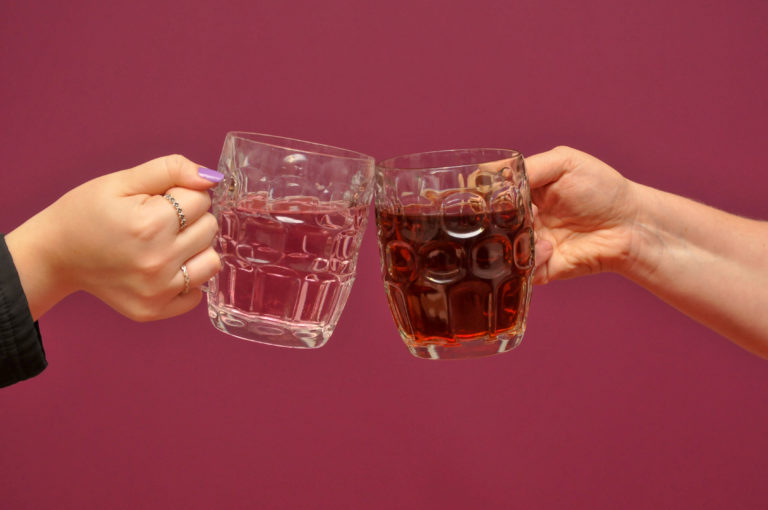Many people are getting ready to take some well-deserved time off this Christmas. Inevitably, for some, kicking back and relaxing will involve rich food and a few festive drinks. And after the year we’ve all had, who can blame them? Your office Christmas party may have fallen foul of the recent round of restrictions but at the time of writing, families and friends are still able to join together and celebrate.
Obviously, we can’t escape the elephant in the room that long term misuse of alcohol can have a serious and sometimes life limiting impact on our minds and bodies, but today we are going to focus on some of the other effects and look at ways that we can be more aware, proactively managing some of that risk. How can we drink more responsibly and make sure we are ‘getting merry on the sherry’ rather than crying into our gin (or worse…)?
Let’s find out.
As well as impacts on health, it’s very famous partner ‘safety’ always wants in on the action – especially when alcohol is concerned. Alcohol can dull the senses, affecting visibility and physical stability. It not only impairs our judgement but also slows down reactions and responses. Accidents like slips and falls are far more likely when we have alcohol ‘on board’ and we are more likely to make poor decisions about personal safety or intimate contact when our inhibitions are diminished and our ability to assess risk is reduced. We are also less likely to engage in Covid-safe practices and behaviours. It’s harder to remember that we should be socially distanced in an alcohol fuelled environment and let’s face it, who wants to wear a mask when you’re singing karaoke at the top of your voice? Application of hand sanitiser becomes a second thought rather than second nature and don’t get me started on kissing under the mistletoe…
As well as physical, sexual and Covid safety, there’s also the drink driving issue. While most of us think we would never drink and drive, many people don’t realise that they are over the limit believing themselves to be ‘safe’. Alcohol not only affects people differently, but various factors can change the effects, each and every time, so you never really know how much alcohol is in your bloodstream at any one point.
A good way to combat all of the issues outlined above is being aware of what you are drinking and recognise how many units are in each drink. Remember that home measures will be invariably larger than those served on a licensed premises (sometimes you will be drinking multiple measures which means multiple units) and that mixers don’t reduce the number of units. Adding more liquid will help with the absorption process and slow down the effects but if you finish the glass, it still counts.
Men and women are advised not to drink more than 14 units a week on a regular basis. Spread your drinking over 3 or more days if you regularly drink as much as 14 units a week.
So, what’s in your drink? Check out our handy table. You may be surprised.
Standard glass of wine (175ml / 13%) 2.3 units
Large glass of wine (250ml / 13%) 3.3 units
Glass of fortified wine (50ml / 20%) 1 unit
Pint of lager (4%) 2.3 units
Pint of strong lager / beer (5.2%) 3 units
Bottle of wine (13.5%) 10 units
Can of lager (400ml / 3.8%) 1.9 units
Alcopop (275ml / 5%) 1.4 units
Single Spirit (25ml / 40%) 1 unit
It’s also important to know how long it takes for alcohol to leave your system. Just because you’ve been to sleep in between drinking and getting in the car doesn’t automatically mean that you’re OK to drive. According to data from the Department of Transport, around 20% of offences are from the ‘morning after’ meaning that even if you’ve had sleep, there’s no guarantee that all the alcohol has passed out of your system.
Before you read on, have a guess at how long it might take for you to be ‘safe’ to drive…
How did you do?
Here’s a simple way to work it out.
To calculate the minimum time to allow before driving, you should add up the number of hours per drink + 1 hour, from your LAST drink.
Here’s a handy table to show you how long it takes…
1 x large glass of wine (13%) 3.5 hours
1 x pint of lager / beer (3%) 2.5 hours
1 x single spirit (40%) 1.5 hours
1 x double spirit (40%) 3.5 hours
1 x bottle of lager (5%) 2.5 hours
Sounds OK right? But then consider that you have to start calculating this time from the end of your LAST DRINK and who really stops at one? Especially not at Christmas. Suddenly, the drinks are adding up, the units are adding up and the time that you are over the limit is suddenly looking huge… If you are in any doubt whatsoever, don’t risk it. Get a taxi, take the bus, or ask someone for a lift.
While we’ve got all our fingers and toes out to count the units, we might as well talk about calories. Yes, we know it’s Christmas and it’s time for a treat, but many people forget to include drinks in their daily calorie intake, and they soon add up. In a survey of 2000 adults, conducted in 2014 by the RSPH, over 80% of people did not know the number of calories in a large glass of wine. Are you in that 80%? Have a guess and then check out our table below.
One unit of alcohol contains about 8g or 10ml of alcohol which equates to about 56 calories. Add in some of the other ingredients such as sugar, cream or fruit juice and soon your glass of wine is looking almost as fattening than a cheeky chocolate bar… And have you ever questioned that late night kebab on the way home? Alcohol is an appetite stimulant which can lead to over-eating at mealtimes or late at night when your body is less efficient at burning off fat.
Again, we are not saying don’t do it. We are saying, get aware. Equip yourself with the facts, take sensible steps to manage the risks and we promise you’ll enjoy yourself more in the long run.
Take a look at our ‘Alcohol aerobics’ list provided by The Daily Telegraph to see how many calories are in your favourite tipple and how much exercise you’ll have to do to burn them off.
Beer (425ml) 162 calories 30 minutes of golf
Dry White Wine (160ml) 108 calories 28 minutes of walking
Sparkling white wine (160ml) 103 calories 12 minutes of jogging
G&T (230ml) 138 calories 23 minutes of low impact aerobics
Sweet Cider (375ml) 197 calories 24 minutes of swimming
Espresso Martini 318 calories 81 minutes of walking
Postcript:
You’ve dressed up, you’ve gone out, you’ve followed our tips and hopefully you’ve had a good night. Here are some easy dos and don’ts to avoid / manage the dreaded ‘morning after the night before’ hangover.
- Drink water or fruit juices between your alcoholic drinks
- Drink some water before you go to sleep.
- Be aware that drinking fizzy drinks speeds up the absorption of alcohol into your system so you may experience the effects more quickly.
- Rehydrate; drink plenty of water the next day to help deal with the hangover symptoms.
- Eat sugary foods to feel less trembly; eating a banana will kick start your body’s recovery.
- Take paracetamol to help with the headaches but don’t take more than the recommended dose.
- Don’t drink on an empty stomach.
- Don’t exceed your limits; drinking more than 8 units in one session puts your body at risk of serious health conditions.
- Don’t drink more alcohol. It will not help! It is simply delaying the hangover.
Merry Christmas from all of us at Choose Occupational Health. If you would like more information on alcohol awareness please visit the following websites: www.drinkaware.co.uk and www.alcoholchange.org.uk

